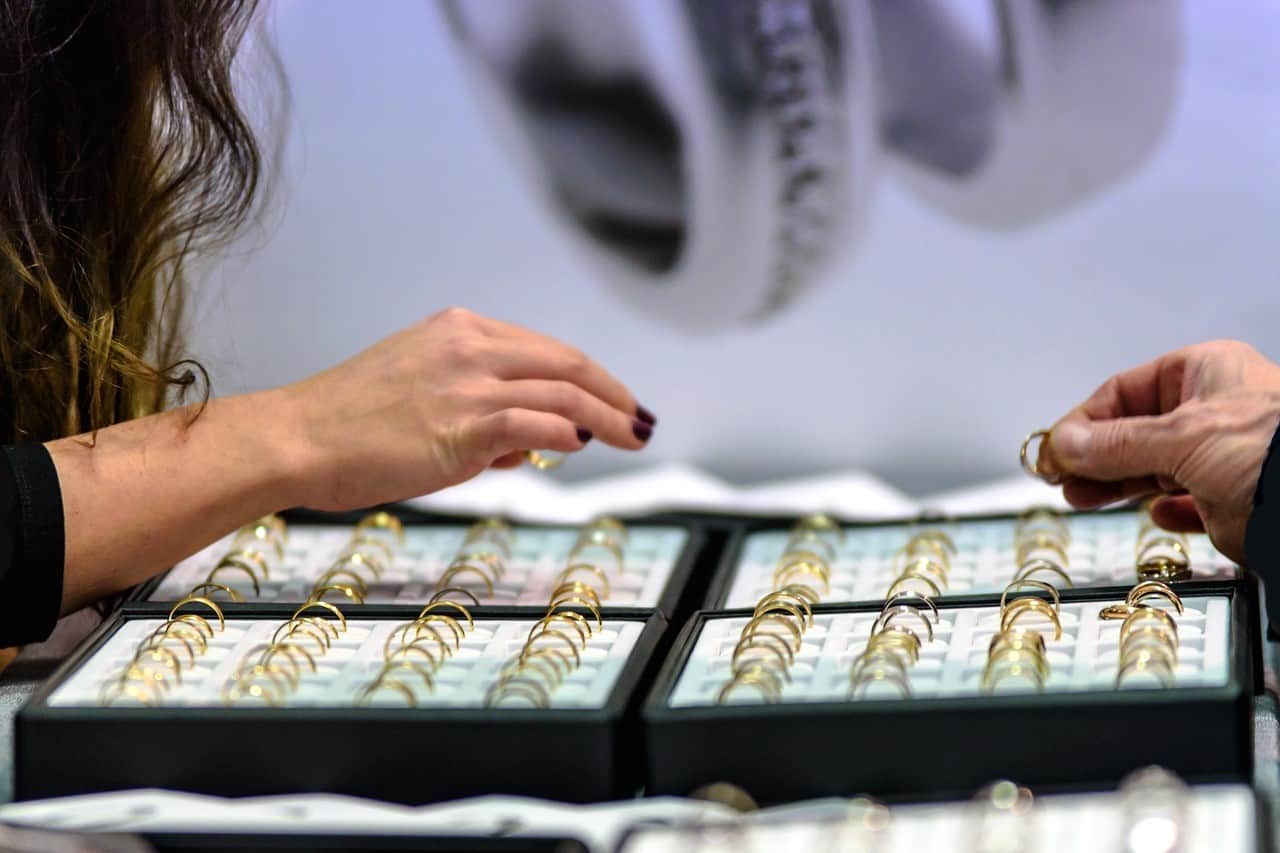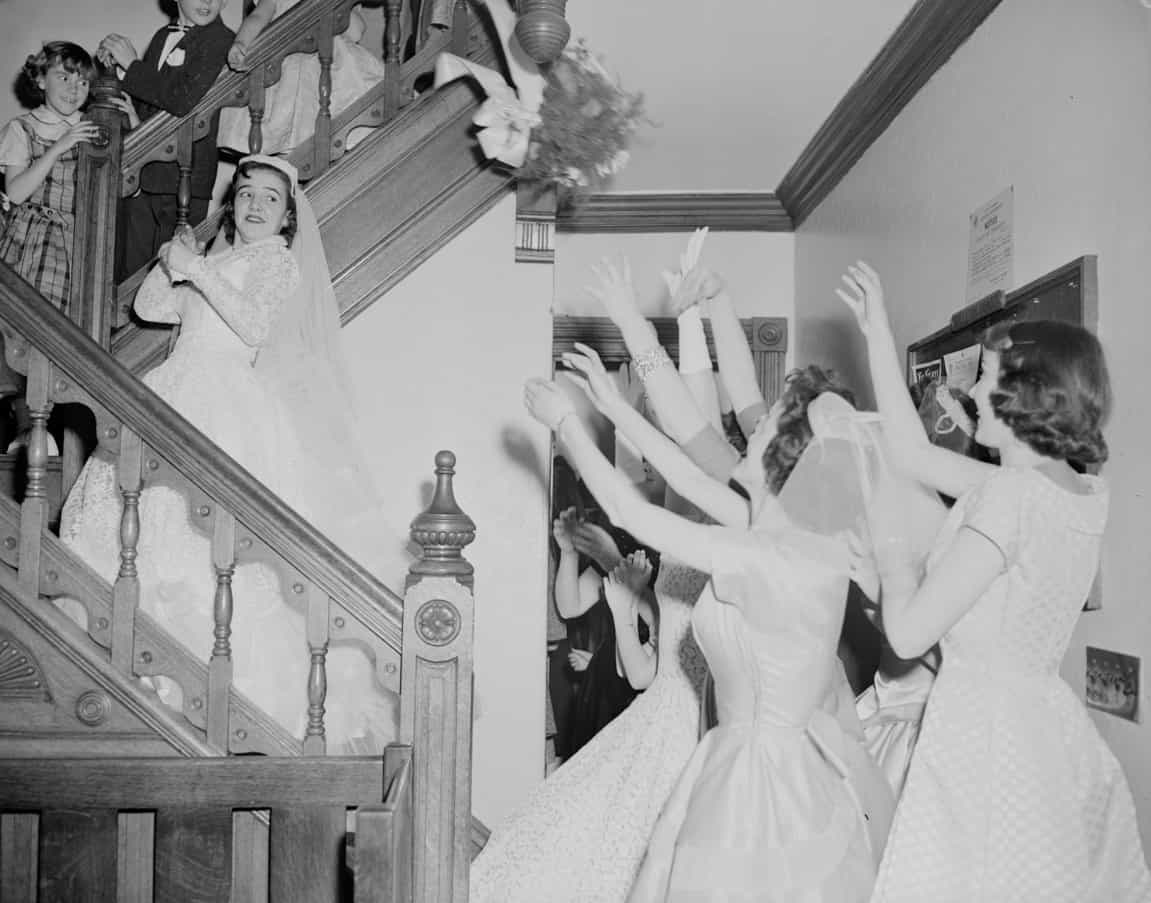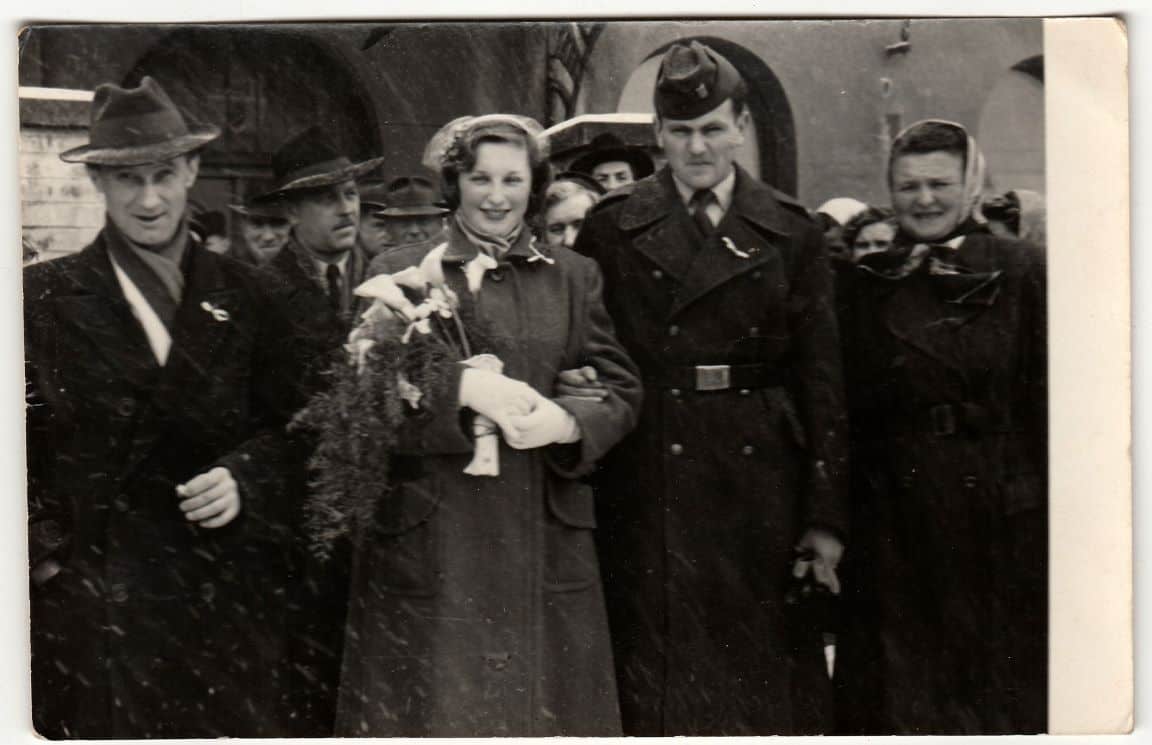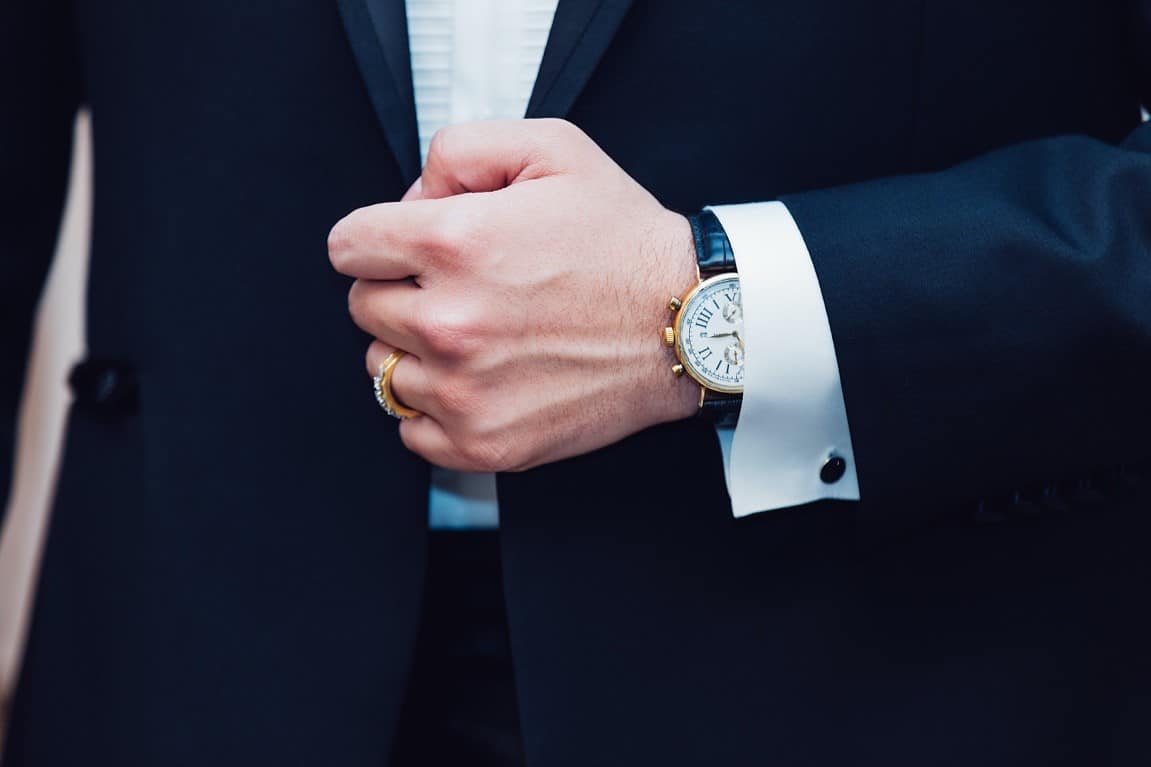When we think of weddings, what often comes to mind is an image of a woman in a beautiful white gown with an exquisite ring. For centuries, many aspects related to weddings have been viewed as feminine. Only in recent times have we seen more focus on the groom, especially when it comes to men’s wedding rings.
When did men start wearing wedding rings? While wedding rings have been around as early as 5,000 years ago, men started wearing wedding rings as a symbol of their marital status during the middle of the 20th century. This was a result of consumer capitalism, decades of feminism, postwar sentiments, and other historical, societal, and economic factors.
The history of men’s wedding rings is outlined below and separated into three broad eras. The current state and perception of wedding rings are also briefly discussed.
The Historical Evolution of Men Wearing Wedding Rings
Ancient History of Wedding Rings
Signet rings were also popular among the Romans and Greeks. Scholars posit that signet rings paved the way for Roman betrothal rings; it is also the Romans who first associated rings with marriage. These are carved in stone or gold “fede” rings, which consist of two intertwined hands as if in agreement. Over time, Romans shifted towards rings with engravings of the couple’s faces or figures.
Fede rings remained in style for more than a millennium. By the 15th century, two new styles of wedding rings emerged: the posy ring, which are rings engraved with short verses from a poem or a statement about love; and the gimmel ring, which are complex rings composed of two to three interlocking bands.
Consistent across multiple ancient cultures, whereas men would wear rings to signify power and wealth, betrothal rings for women represented a transfer of ownership from her family to her husband. These socioeconomic meanings attached to rings would persist even to the modern era.
Capitalism, the 1920s, and the Failed “Men’s Engagement Rings”

With the arrival of consumer capitalism, and along with it, innovations in manufacturing, merchandising, and distribution, during the latter half of the 19th century, family-run and specialty businesses found themselves in competition with large industries and mass marketers. The resulting economic turbulence forced them to rethink their operations and strategies when it comes to staying afloat.
Knowing they could not afford to match the discounted prices of jewelry in department stores and mass marketers, retail jewelers instead focused on their individualized and professional services. Moreover, they had “invented traditions” that introduced new functions for their products. Such invented traditions include rings for babies, graduation rings, dinner rings, sweet 16 rings, and so on.
Wedding bands for the groom were introduced through massive media campaigns of “male engagement or betrothal rings” in 1926. According to Vicki Howard’s article, “A “Real Man’s Ring”: Gender and the Invention of Tradition,” these campaigns drew largely from the traditional symbolism attached to rings, using gendered language and imagery to enforce the notion of the male engagement ring as a “heterosexual tradition.”
Three major factors contributed to the overall failure of the campaign for men’s engagement and wedding rings during the 1920s:
- The decline of “masculine domesticity,” a term coined by historian Margaret Marsh that refers to suburban husbands and their heightened participation and function in the upbringing of their children
- Consumption being viewed as a feminine activity, although some purchases are not done without a man’s permission
- The Great Depression, in which millions of Americans lost their jobs; consequently, marriage rates plummeted across the country
Feminism, World War II, and the Companionate Marriage

The feminist movement first emerged in 1848 with the Seneca Falls Convention, which is regarded as the first women’s rights convention. The Declaration of Sentiments was then signed, which asserted that “The history of mankind is a history of repeated injuries and usurpations on the part of man towards woman.”
This kick-started decades of fighting for rights and equality. Although there is a lot to be said about the morality and intersectionality of these initial feminist movements, women were beginning to see more liberties and opportunities to participate and engage in society.
As early as the late 1800s, German Jewish brides were already pushing rabbis to recognize the groom’s ring. As noted by Howard, these brides wanted “to bring a sense of equality to the ritual,” hence the push. Similarly, during World War I, English brides had started discussing the induction of men’s wedding rings as a custom.
In World War II, there was a dramatic shift in American society’s regard towards women. As men were drafted, women shouldered the responsibility of providing for their household. As a result, the workforce saw an influx of women, and the public lauded them for their competence and intelligence.

Concurrently, World War II witnessed a “marriage fever,” in which the United States saw a marriage rate of 16.4 per 1,000 people, making it the highest rate in the industrial world at the time. The jewelry industry capitalized on this marriage fever by doubling down on campaigns surrounding a “double ring” marriage, in which both the bride and the groom wore rings. In both World Wars, proxy marriages were carried out through telephones wherein deployed soldiers could marry their partners at home.
In this campaign, retailers maximized wartime sentiments; according to Howard, wedding rings and masculine bands were branded as “tokens of love and commitment [that] could provide some relief from the pain of separation and potential loss.” By the 1940s, double-ring weddings accounted for 80% of all weddings compared to single-ring weddings.
During the 1940s and 1950s, masculine domesticity returned in the public sphere as the growing American middle-class experienced physical and ideological changes in terms of family and gender relations. Men carried out more household responsibilities. This period saw the rise of companionate marriages, which Howard defined as a marriage “characterized by romance, companionship, sexual fulfillment, mutual respect, and emotional satisfaction.” Men’s wedding rings then became a symbol of their acceptance of masculine domesticity.
The postwar era saw a new wave of feminism and an economic boom. This only served to popularize the middle-class suburban family ideal and the material representations, i.e., double rings, that came with it.
Men’s Wedding Rings in the Current Time

Due to the work of previous generations in fighting for equality among men and women, wedding rings are no longer viewed as a symbol of ownership. Instead, wedding rings, and marriage as a whole, is viewed as a symbol of love and commitment between two people.
The phenomenon of “inventing traditions” remains to this day. For instance, promise rings and other types of pre-engagement rings have become widely used. Each of these rings has its own use and significance, and couples have the freedom to choose which ring would fit their relationship best.
Some men still opt not to wear their wedding bands for a multitude of reasons. A known example would be Prince William, the Duke of Cambridge. According to a royal aide, he “isn’t one for jewelry.” While some may find this inconsequential, some view it as suspicious and may have underlying motives.
Ultimately, whether a man wears his wedding ring or not is no one’s business but the man himself and his wife. With that said, the fact that some people now criticize the absence of a wedding ring on a man’s finger is a testament to how much society’s perspective on it has changed over the years.
Final Thoughts
So, when did men start wearing wedding rings? As with everything else, the popularity of men’s wedding rings today is a result of decades, even centuries, of historical events and struggles. Capitalism and feminism, among other movements, created the ideal socioeconomic environment for men’s wedding rings to surge in demand.
Being aware of the history of men’s wedding rings will allow us to understand how their aspects and symbolism came to be. Likewise, we can appreciate what we have today even more.